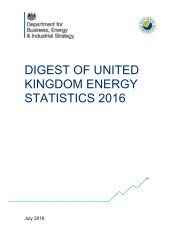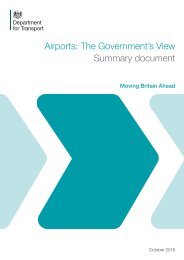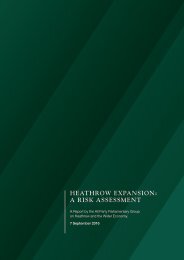20131211-2013.12Reports
20131211-2013.12Reports
20131211-2013.12Reports
Create successful ePaper yourself
Turn your PDF publications into a flip-book with our unique Google optimized e-Paper software.
Analysis and Investigation<br />
UKAB Secretariat<br />
Analysis of the radar recording shows the Vigilant operating 3nm to the north-east of Henlow,<br />
tracking east with no mode C indication available. The aircraft manoeuvres left and right twice,<br />
and then crosses the A1 just before the reported time of the Airprox.<br />
A primary radar return appears 3nm to the north of Henlow, moving in a steady right-hand curving<br />
turn towards the Vigilant. The return crosses the A1 and then disappears from the recording<br />
0.3nm behind and slightly to the right of the Vigilant’s return. Primary returns can then be<br />
observed twice, ahead of the Hurricane’s track, consistent with its track speed, around 1nm to the<br />
north west of Newnham, but cannot be positively correlated with the Hurricane’s previous radar<br />
returns.<br />
The Vigilant had right of way because it was being overtaken by the Hurricane, which was<br />
required to overtake on the right. 1 The Vigilant pilot’s report and the radar recording indicate that<br />
the Hurricane passed down the right-hand side of the Vigilant. The Hurricane pilot had the<br />
responsibility to ‘keep out of the way’ of the Vigilant until the aircraft were clear of each other. 2&3<br />
The Hurricane’s radar return fades 0.3nm from the Vigilant’s return with no Mode C information<br />
available for either aircraft; given the tracks of the aircraft it is possible that the actual CPA was<br />
closer, but the Vigilant pilot’s report of 20m H cannot be corroborated by the radar recording.<br />
Comments<br />
HQ Air Command<br />
Without the report from the Hurricane pilot, assessing this Airprox is much more difficult and it is<br />
hard to identify what might be done to prevent a recurrence. The Hurricane pilot had the<br />
responsibility to avoid the Vigilant under the Rules of the Air and either did not see it or chose to<br />
fly close enough to cause concern. For their part, the Vigilant crew appear to have had<br />
reasonable situational awareness, sighting the Hurricane as it approached them initially from the<br />
outside of their turn and then from behind.<br />
Summary<br />
The Airprox occurred in Class G airspace, 3nm south-east of Biggleswade, between a Vigilant motorglider<br />
and a Hurricane, which overtook it. The Vigilant pilot was carrying out an instructional sortie<br />
and was flying VFR in VMC without an air traffic service. The Hurricane could not be definitively<br />
traced so the views of its pilot could not be included in this analysis.<br />
PART B: SUMMARY OF THE BOARD'S DISCUSSIONS<br />
Information available included a report from the Vigilant pilot and radar recordings.<br />
The Board commented that, despite the unique nature of the aircraft, it was unfortunate that the<br />
Hurricane pilot could not be definitively identified. They also commented that it was highly unhelpful<br />
that a Hurricane pilot who had been airborne at the time, and who could have been flying in that area,<br />
chose not to co-operate with the Board, even to rule himself out of the investigation. Whilst it was still<br />
possible to assess the Airprox using the Vigilant pilot’s report supported by the radar data, the Board<br />
was clear that it would have been much easier to identify lessons and compile a more accurate<br />
analysis of the event if a report from the Hurricane pilot concerned had been obtained.<br />
1 Rules of the Air 2007, Rule 11, Overtaking, para 1.<br />
2 Rules of the Air 2007, Rule 11, Overtaking, para 2.<br />
3 Rules of the Air 2007, Rule 8, Avoiding Aerial Collisions, paras 2 & 3.<br />
2







